Early History
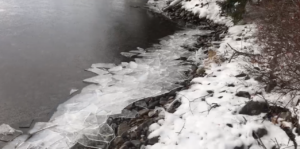 A mere 20,000 years ago, Jamaica Point and the rest of Maine was covered by an ice sheet 5,000 feet thick, leaving only the tip of Mount Katahdin as a tiny rock island amid the dense ice field. As the ice retreated about 12,000 years ago, seawater would periodically flood the land because the weight of the ice had compressed the land beneath it. Much like the ice on Great Pond reforms the shores and moves the boulders as it retreats into summer, and the water washing upon the land erodes the shoreline and softens the rocks, these two great forces, the retreat of the glaciers and the rising and falling sea, formed the unique Maine topography we see today. The ice and sea carved out Great Pond and other lakes, smoothed out the mountain and hill tops, and deposited boulders and rocks in seemingly unexpected places.
A mere 20,000 years ago, Jamaica Point and the rest of Maine was covered by an ice sheet 5,000 feet thick, leaving only the tip of Mount Katahdin as a tiny rock island amid the dense ice field. As the ice retreated about 12,000 years ago, seawater would periodically flood the land because the weight of the ice had compressed the land beneath it. Much like the ice on Great Pond reforms the shores and moves the boulders as it retreats into summer, and the water washing upon the land erodes the shoreline and softens the rocks, these two great forces, the retreat of the glaciers and the rising and falling sea, formed the unique Maine topography we see today. The ice and sea carved out Great Pond and other lakes, smoothed out the mountain and hill tops, and deposited boulders and rocks in seemingly unexpected places.
The first human inhabitants probably arrived on Jamaica Point about 11,500 years ago – most theorize after their ancestors crossed an ice bridge into North America from Asia and traversed the entirety of the North American continent. Called the Paleoindians today, these early humans found wooly mammoths on grassy plains, herds of mastodons, and giant beaver building massive dams in the marshlands. While tools and Native legends surviving in Maine suggest epic battles with some of these beasts, it appears the Paleoindians found more suitable prey in caribou and other smaller mammals. The Paleoindians apparently left Maine around 10,000 to 8,000 years ago for reasons that may relate to the change from tundra to boreal forest. As the sea levels stabilized around 5,000 years ago, human population in Maine began to utilize the coast. But given the harshness of the climate, Natives were forced to frequently move inland and back to the coast again, depending on food sources.
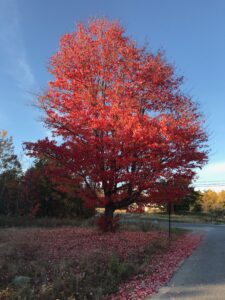 By the time Europeans arrived in Maine, the dominant tribe near Jamaica Point was the Abenaki. Little is known about the relationship between the Abenaki and Europeans, though it appears that, not inconsistent with other Native American/European encounters of that period, the Abenaki were welcoming and the Europeans reciprocated by running them off.
By the time Europeans arrived in Maine, the dominant tribe near Jamaica Point was the Abenaki. Little is known about the relationship between the Abenaki and Europeans, though it appears that, not inconsistent with other Native American/European encounters of that period, the Abenaki were welcoming and the Europeans reciprocated by running them off.
European-American History
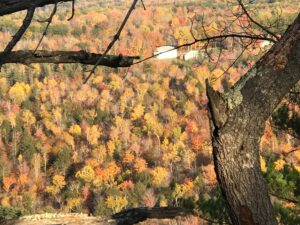 The town of Rome, Maine, in which Jamaica Point sits, was first settled by Europeans around 1780. The early inhabitants were
Benjamin Furbush, Trip Mosher, Stephen Philbrick, Stabard Turner, and Joseph Halbo, who obtained the titles to their lands from Charles Vaughan, R.G. Shaw, and Renel Williams. The area was first called West Pond
Plantation, but was incorporated as Rome, Maine in 1804.
The town of Rome, Maine, in which Jamaica Point sits, was first settled by Europeans around 1780. The early inhabitants were
Benjamin Furbush, Trip Mosher, Stephen Philbrick, Stabard Turner, and Joseph Halbo, who obtained the titles to their lands from Charles Vaughan, R.G. Shaw, and Renel Williams. The area was first called West Pond
Plantation, but was incorporated as Rome, Maine in 1804.
 Around this time, the European population on the South of Great Pond was rapidly expanding based on agriculture and developing mills using waterpower from the lakes, with the principal mill located on the spillway between Great Pond and Long Pond. It is comforting to know today given 19th Century environmental standards that the water runs out of Great Pond and into Long Pond. Industry also formed around another of Great Pond’s abundant resources: ice. In fact, the name “Jamaica Point” apparently comes from the days when ice was carved out of Great Pond off our Point and shipped to Jamaica. This explanation makes sense, because during this period the port towns of Maine supported lucrative trade relationships with the West Indies.
Around this time, the European population on the South of Great Pond was rapidly expanding based on agriculture and developing mills using waterpower from the lakes, with the principal mill located on the spillway between Great Pond and Long Pond. It is comforting to know today given 19th Century environmental standards that the water runs out of Great Pond and into Long Pond. Industry also formed around another of Great Pond’s abundant resources: ice. In fact, the name “Jamaica Point” apparently comes from the days when ice was carved out of Great Pond off our Point and shipped to Jamaica. This explanation makes sense, because during this period the port towns of Maine supported lucrative trade relationships with the West Indies.
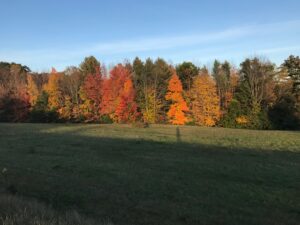 Steve Frost apparently built the first home on Jamaica Point: the white farmhouse known as “Lakeview” at the crest of the hill on Jamaica Point. He also cleared much of the land to begin farming. Upon his death in 1905, Jamaica Point was sold to the Lowe brothers.
Steve Frost apparently built the first home on Jamaica Point: the white farmhouse known as “Lakeview” at the crest of the hill on Jamaica Point. He also cleared much of the land to begin farming. Upon his death in 1905, Jamaica Point was sold to the Lowe brothers.
The Building of Jamaica Point Camps
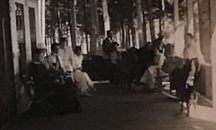 Starting around the mid-19th Century, Great Pond began attracting tourists, who came in increasing numbers as the 20th Century dawned to experience the beauty and recreation that the area offers. Jamaica Point Camps began around 1904 with a few small camps built by the Lowe brothers, likely to take advantage of the tourism boom.
Starting around the mid-19th Century, Great Pond began attracting tourists, who came in increasing numbers as the 20th Century dawned to experience the beauty and recreation that the area offers. Jamaica Point Camps began around 1904 with a few small camps built by the Lowe brothers, likely to take advantage of the tourism boom.
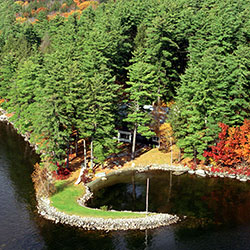 Through a series of transactions, Jamaica Point ultimately came to be owned by Daniel Marshall and his partner Mr. Potter. They built the Lodge shortly after 1912, built 14 more cabins, and added the breakwater to the end of the Point. To build the breakwater, horses pulled carts of heavy rocks across the frozen winter lake, which were then used in the breakwater’s construction. The Lodge and Camps served as an exclusive fishing resort and summer retreat, catering to vacationers who would arrive by train in nearby Oakland.
Through a series of transactions, Jamaica Point ultimately came to be owned by Daniel Marshall and his partner Mr. Potter. They built the Lodge shortly after 1912, built 14 more cabins, and added the breakwater to the end of the Point. To build the breakwater, horses pulled carts of heavy rocks across the frozen winter lake, which were then used in the breakwater’s construction. The Lodge and Camps served as an exclusive fishing resort and summer retreat, catering to vacationers who would arrive by train in nearby Oakland.
The Jamaica Point Camps Resort
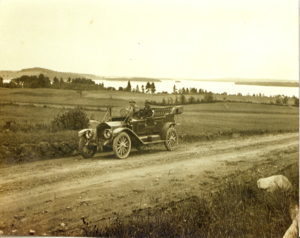 An early Jamaica Point Camps brochure (ca. 1920) reported that the resort “is but five hours by train from Boston and 13 hours from New York through Pullman service from both places. It is a most delightful experience to leave New York on the Bar Harbor Express after a hot, humid day in the city, arrive at Oakland at eight-thirty the next morning, and drive those eight miles in the Company’s automobile through the wonderfully fresh and invigorating Maine air to Jamaica Point.” The Company’s automobile was, of all things, a 1915 Franklin. The brochure adds that: “Daily mail service, long distance telephone, and telegraph keep guests in touch with the outside world… Both hotel and camps are equipped with all modern conveniences including running water, toilet and bath.”
An early Jamaica Point Camps brochure (ca. 1920) reported that the resort “is but five hours by train from Boston and 13 hours from New York through Pullman service from both places. It is a most delightful experience to leave New York on the Bar Harbor Express after a hot, humid day in the city, arrive at Oakland at eight-thirty the next morning, and drive those eight miles in the Company’s automobile through the wonderfully fresh and invigorating Maine air to Jamaica Point.” The Company’s automobile was, of all things, a 1915 Franklin. The brochure adds that: “Daily mail service, long distance telephone, and telegraph keep guests in touch with the outside world… Both hotel and camps are equipped with all modern conveniences including running water, toilet and bath.”
 Guests of Jamaica Point Camps could stay in one of the guest rooms at the Lodge itself or take advantage of “Camp living with its independence and privacy [which] appeals to a large number of people”. Meanwhile, “the broad verandas and living room of the main building furnish a place for the more general forms of sociability among the guests. Meals are served in the main building, and food and service are the best.” What is today the Lodge’s Great Room served as a dining hall, and meals were made from the fresh produce grown on the farmland originally cleared by Mr. Frost. That farmland today is split between the Mosher family and Dick and Lois Labelle, who, as a girl, waited tables at the Lodge. In its early days, this farm supplied the Lodge “with chickens, fresh vegetables, fruit, butter, eggs, cream and milk.”
Guests of Jamaica Point Camps could stay in one of the guest rooms at the Lodge itself or take advantage of “Camp living with its independence and privacy [which] appeals to a large number of people”. Meanwhile, “the broad verandas and living room of the main building furnish a place for the more general forms of sociability among the guests. Meals are served in the main building, and food and service are the best.” What is today the Lodge’s Great Room served as a dining hall, and meals were made from the fresh produce grown on the farmland originally cleared by Mr. Frost. That farmland today is split between the Mosher family and Dick and Lois Labelle, who, as a girl, waited tables at the Lodge. In its early days, this farm supplied the Lodge “with chickens, fresh vegetables, fruit, butter, eggs, cream and milk.”
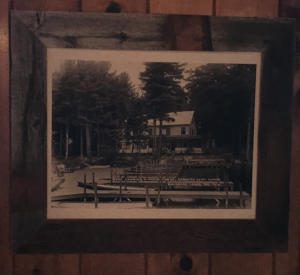 Reproduced photos from this period, which now adorn the walls of Jamaica Point Lodge, demonstrate what a marvelous resort Mr. Marshall had established. By 1937, however, the depression took its toll and Jamaica Point Camps went into foreclosure. It was fortunately rescued by a series of new owners, who continued Mr. Marshall’s fine tradition until 1957.
Reproduced photos from this period, which now adorn the walls of Jamaica Point Lodge, demonstrate what a marvelous resort Mr. Marshall had established. By 1937, however, the depression took its toll and Jamaica Point Camps went into foreclosure. It was fortunately rescued by a series of new owners, who continued Mr. Marshall’s fine tradition until 1957.
The Sell-Off
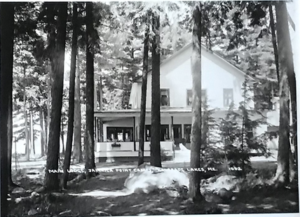 In l957, Jamaica Point was subdivided and the Lodge and quaint lakeside camps were all sold off individually. By necessity, kitchens were added to the cabins, because the Lodge could no longer serve as the central eating facility. Many of the cabins have also undergone additional substantial restoration to accommodate larger families without the benefit of the Lodge and its grounds.
In l957, Jamaica Point was subdivided and the Lodge and quaint lakeside camps were all sold off individually. By necessity, kitchens were added to the cabins, because the Lodge could no longer serve as the central eating facility. Many of the cabins have also undergone additional substantial restoration to accommodate larger families without the benefit of the Lodge and its grounds.
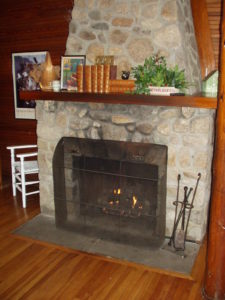 However, by blind luck, or just good stewardship, Jamaica Point Lodge remained virtually unchanged from its original construction. The Victorian Piano remains in tact. The precious bit of land constituting the breakwater fortunately was untouched, and remains grandfathered today, as strict state shore-land zoning codes preclude any lakeside alterations. And, as one can see from the reproduced vintage photographs that today grace the walls of Jamaica Point Lodge, the interior of the Lodge looks much the same as it did in the 1920s.
However, by blind luck, or just good stewardship, Jamaica Point Lodge remained virtually unchanged from its original construction. The Victorian Piano remains in tact. The precious bit of land constituting the breakwater fortunately was untouched, and remains grandfathered today, as strict state shore-land zoning codes preclude any lakeside alterations. And, as one can see from the reproduced vintage photographs that today grace the walls of Jamaica Point Lodge, the interior of the Lodge looks much the same as it did in the 1920s.
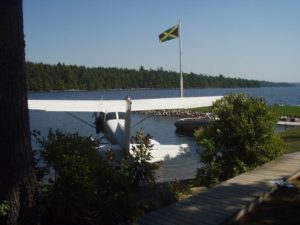 Indeed, Jamaica Point Lodge sat idle for many years until being purchased in 1986 by Steve Feldman and Beth Davis, who ran it as a rental property and provided a major and needed renovation to the kitchen. In 1996, Steve and Beth also obtained a permit from the state to add “rip rap” to the Point in order to stem erosion caused principally by powerful winter ice chunks that move the big rocks and gouge at the soil.
Indeed, Jamaica Point Lodge sat idle for many years until being purchased in 1986 by Steve Feldman and Beth Davis, who ran it as a rental property and provided a major and needed renovation to the kitchen. In 1996, Steve and Beth also obtained a permit from the state to add “rip rap” to the Point in order to stem erosion caused principally by powerful winter ice chunks that move the big rocks and gouge at the soil.
The Future?
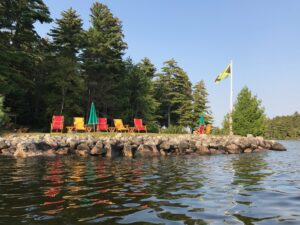 In October 2012, the Franklin family purchased Jamaica Point Lodge with the goal of returning the Lodge to its former glory while retaining its original character and adding to the wealth of recreational opportunities Jamaica Point can offer. The renovation to the Lodge was largely completed by June 2013.
In October 2012, the Franklin family purchased Jamaica Point Lodge with the goal of returning the Lodge to its former glory while retaining its original character and adding to the wealth of recreational opportunities Jamaica Point can offer. The renovation to the Lodge was largely completed by June 2013.
More History
Jamaica Point residents Karen Norman and Lynda Murray published an excellent history of Jamaica Point Camps, filled with rare and interesting photographs and memories. A copy of their book is available at the Lodge for guests to enjoy.
